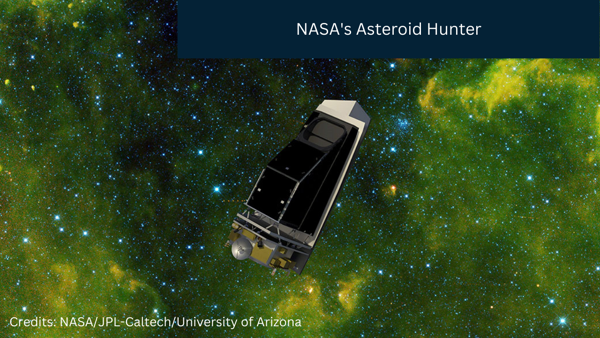
Science & Space
NASA's Next-Generation Asteroid Hunter: NEO Surveyor
On February 15, 2023, a house-sized meteor entered the earth's atmosphere at over 40,000 mph or 64373.76 kph and 14 miles or 22.5308 kilometers above Chelyabinsk, Russia, causing a shock-wave that shattered windows and damaged buildings in several Russian cities, injuring 1,600 people and generating 30 times the energy of the Hiroshima atomic bomb.
And such occurrences are not uncommon for any of the solar system's celestial bodies. Every planet and moon has been and continues to be bombarded by foreign bodies on a daily basis. But none of the events can hold our attention because we lack the resources to track every celestial event in the solar system; we only track massive events. The collision of Comet Shoemaker-Levy 9 in 1994 was one of the most significant.
The events on Earth are being tracked by ground-based telescopes and occasionally by space telescopes, but these efforts are insufficient to protect the human species from the Jurassic impact. The Jurassic asteroid was enormous, measuring between 10 and 15 kilometers wide. It formed Chicxulub Crater, the world's second-largest creator, with a 150-kilometer diameter in Mexico's Yucatan peninsula. The asteroid wiped out entire dinosaur species from the face of the earth.
To protect the human species from such a lethal impact, countries, particularly the United States' NASA and other space agencies, are taking precautionary measures to detect and destroy objects using every available resource. NASA has already developed and demonstrated such capability to divert objects away from the Earth's impacting path and sway the object out of Earth's orbit. That technology knows as Double Asteroid Redirection Test (DART).
NASA needs to detect objects first before using this technology, which is why NASA is developing the Near Earth Object Surveyor space telescope, which will advance NASA's planetary defense efforts by finding and tracking Near Earth Objects (NEO) using ultraviolet rays.
A space telescope designed to search for the most difficult-to-find asteroids and comets that stray into Earth's orbit. These are the Near Earth Objects(NEO) orbiting around the sun within 1.3 astronomical units (AU) or 1.208e+8 miles or 1.945e+8 kilometers. If a NEO's orbit crosses that of the Earth and the object is larger than 140 meters (460 feet), it is classified as potentially hazardous (PHO).
There are over 30,000 Near Earth Objects (NEOs) and over a hundred known short-period near-Earth comets (NECs) orbiting the sun, some of which are dangerously close to the Earth. Therefore, the primary goal of the Near Earth Object Surveyor space telescope will be to track their movements and keep a constant eye on them.
The mission is in the final stages of design and fabrication, where it will establish technical, cost, and schedule baselines. Following that, production will begin because the deadline for launching this eye into space is 2026.
The mission contributes to the goals of NASA's Planetary Defense Coordination Office (PDCO), which is based at NASA Headquarters in Washington. The NASA Authorization Act of 2005 mandated that NASA discover and characterize at least 90% of near-Earth objects larger than 140 meters (460 feet) in diameter that passes within 30 million miles (48 million kilometers) of our planet's orbit. Objects of this size have the potential to cause significant regional damage, if not worse if they collide with the Earth.
The project is being handled by NASA's Jet Propulsion Laboratory, in California. The NEO Surveyor will first be placed in Lagrange Point 1 between the Earth and the Sun, where it will orbit for the next five years.
From Lagrange Point 1, The NEO Surveyor will observe the solar system in infrared wavelengths that the human eye cannot see. Because those wavelengths are mostly blocked by the Earth's atmosphere, larger ground-based observatories may miss near-Earth objects that this space telescope can detect thanks to its modest light-collecting aperture of nearly 20 inches or 50 centimeters or 0.5 meters.
NEO Surveyor's cutting-edge detectors are designed to observe two heat-sensitive infrared bands that were specifically chosen to track the most difficult-to-find near-Earth objects, such as dark asteroids and comets that don't reflect much visible light. Because they are heated by sunlight, these objects glow in the infrared wavelengths to which NEO Surveyor is sensitive.
The NEO Surveyor will also be able to detect asteroids approaching Earth from the Sun's direction, as well as those that lead and trail our planet's orbit, where they are typically obscured by the glare of sunlight - these are known as Earth Trojans.
Therefore, there is no doubt about the efficiency and accuracy of the space telescope. The world is just waiting for it to be launched by NASA.

0 Comments